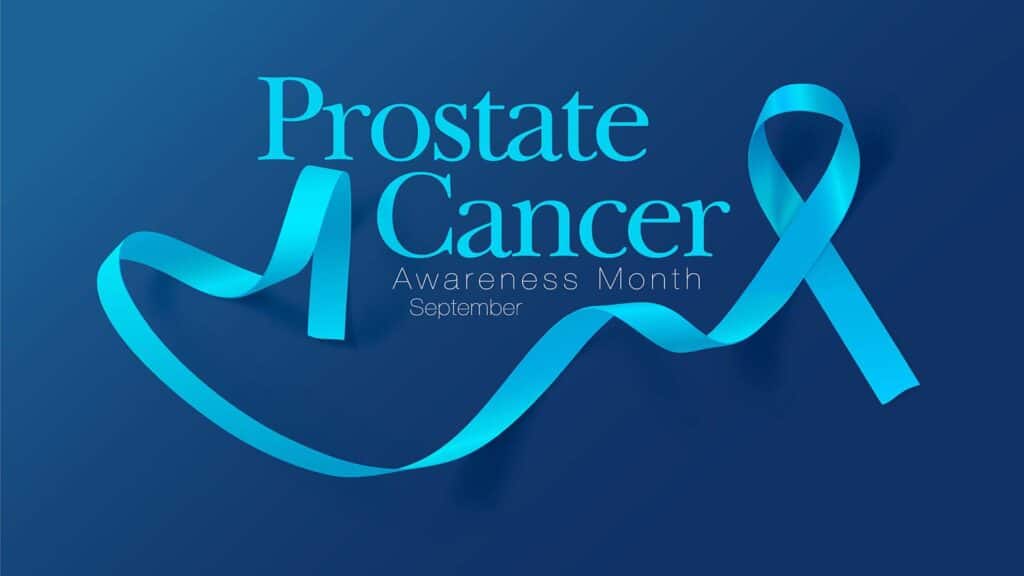Prostate Cancer Awareness Month
A Guide to Raising Awareness and Taking Action
Prostate Cancer Awareness Month is observed each September, a time dedicated to increasing awareness about prostate cancer, educating men about the importance of early detection, and supporting ongoing research for better treatment and prevention. With prostate cancer being one of the most common types of cancer in men, this month provides a vital opportunity to encourage conversations around men’s health, reduce the stigma surrounding cancer, and empower individuals to take proactive steps toward their health and well-being.
Locally, the Delaware Prostate Cancer Coalition (DPCC) is committed to maintaining an environment that values and embraces diversity, equity, and inclusion. DPCC believes that it is essential to embrace our differences to promote, support, and improve the health care of individuals, families, and communities with prostate cancer.
The Significance of Prostate Cancer Awareness Month
Prostate cancer primarily affects men over the age of 50, though the risk can be higher for men with a family history of the disease or certain genetic factors. The awareness campaign for prostate cancer was introduced in the late 1990s, as medical professionals and advocacy groups realized the need for better education on the subject. Men were often not aware of the risks, symptoms, or screening options, which resulted in delayed diagnoses.
Prostate Cancer Awareness Month aims to change this narrative by emphasizing early detection. When caught early, prostate cancer can often be treated successfully, with higher survival rates. This is why events throughout September focus on encouraging men to speak with their healthcare providers, get regular screenings and make informed decisions about their health.
Screening and Early Detection
A crucial component of Prostate Cancer Awareness Month is promoting early detection. Routine screenings, such as prostate-specific antigen (PSA) tests and digital rectal exams (DRE), can help identify prostate cancer in its early stages, when it is most treatable. PSA tests measure the level of prostate-specific antigen in the blood, with elevated levels potentially indicating the presence of prostate cancer. However, high PSA levels can also be associated with other conditions, so further testing is usually required to confirm a diagnosis.
Men over 50 are encouraged to speak with their doctors about getting screened, and for those with a family history of prostate cancer, screenings may be recommended even earlier, around age 40 or 45. Early detection significantly improves treatment outcomes, which is why increasing awareness about these screenings during Prostate Cancer Awareness Month is so essential.
Understanding the Risk Factors
Prostate cancer develops in the prostate gland, a small organ responsible for producing seminal fluid. While the exact cause of prostate cancer is not always clear, several risk factors have been identified. Age is one of the most significant, with the likelihood of developing prostate cancer increasing as men get older. In fact, about 60% of cases are diagnosed in men over 65.
Genetics also play a role. Men with a family history of prostate cancer, especially if a father or brother was diagnosed with the disease, are at a higher risk. African-American men are also more likely to develop prostate cancer and have more aggressive forms of the disease compared to men of other racial or ethnic backgrounds.
Other factors include diet and lifestyle. Studies suggest that men who consume high-fat diets, particularly from animal sources, may have a higher risk of developing prostate cancer. Obesity and lack of physical activity can also contribute to the risk, making it important to adopt healthier habits as a preventative measure.
Prostate Cancer Symptoms
One of the challenges in detecting prostate cancer early is that it often develops without noticeable symptoms in the initial stages. However, as the cancer progresses, men may begin to experience several symptoms, including:
- Difficulty urinating or a weak urine stream.
- Frequent urination, especially at night.
- Blood in the urine or semen.
- Pain or discomfort in the pelvic area or lower back.
- Erectile dysfunction.
Because many of these symptoms can also be related to non-cancerous conditions, men need to consult their healthcare provider if they experience any of these issues. Prostate Cancer Awareness Month provides an excellent reminder for men to pay attention to their bodies and seek medical advice when needed.
Treatment Options and Advances
For men diagnosed with prostate cancer, treatment options vary depending on the stage of the disease, age, overall health, and personal preferences. Common treatment methods include:
- Surgery: In more advanced cases, surgery may be recommended to remove the prostate gland.
- Radiation Therapy: This involves using targeted radiation to kill cancer cells.
- Hormone Therapy: Designed to reduce testosterone levels, which prostate cancer cells need to grow.
- Chemotherapy: Used when cancer has spread beyond the prostate.
In recent years, significant advancements in prostate cancer research have led to the development of newer, less invasive treatments, including targeted therapies and immunotherapy, which harness the power of the immune system to fight cancer. Ongoing research efforts continue to explore new methods for both treatment and prevention, and Prostate Cancer Awareness Month plays a vital role in funding and promoting this research.
How You Can Get Involved
Prostate Cancer Awareness Month is a time for individuals and communities to support the cause. There are several ways to get involved and make a difference, whether through fundraising events, awareness campaigns, or simply spreading the word about the importance of screening.
- Join a Walk or Run: During September, many organizations host charity runs and walks to raise funds for prostate cancer research and patient support services. Participating in these events not only helps to raise awareness but also brings communities together in solidarity.
- Wear Blue: The blue ribbon is the official symbol of prostate cancer awareness. Wearing blue throughout September, particularly on designated awareness days, can spark conversations and help educate others about the importance of prostate health.
- Donate to Prostate Cancer Research: Donations to organizations like the Prostate Cancer Foundation or the American Cancer Society help fund critical research into better treatments and, ultimately, a cure for prostate cancer.
- Host Educational Events: Whether at work, school, or within your community, organizing an event or seminar about prostate cancer can provide valuable information to those who may be at risk or unaware of screening options.
Prostate Cancer Awareness Month is an opportunity for men to take charge of their health, for communities to support those affected by prostate cancer, and for researchers to continue their work toward better treatments and early detection methods. By fostering education, encouraging early screening, and supporting ongoing research, we can make significant strides in reducing the impact of prostate cancer on men’s lives.
Staying informed, getting regular screenings, and adopting healthy habits are just a few ways men can reduce their risk. Let this September serve as a reminder to prioritize prostate health and spread awareness throughout the year.




